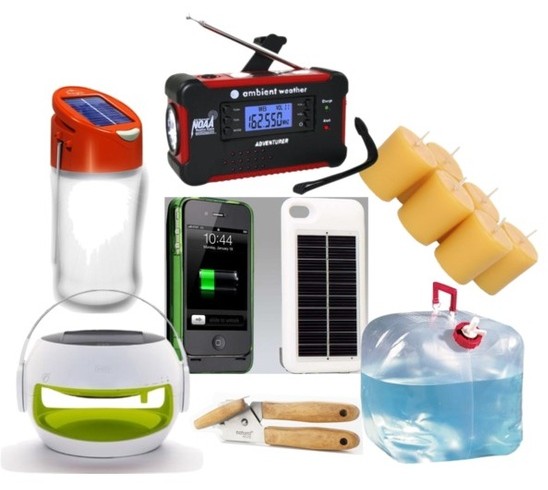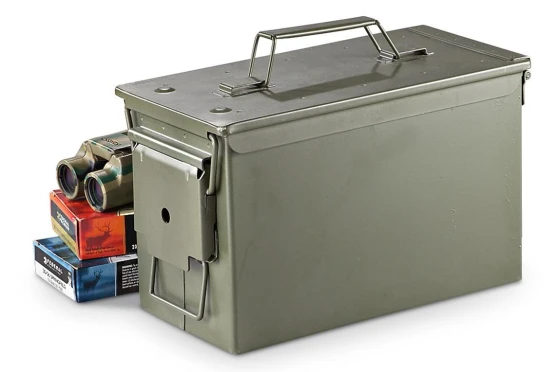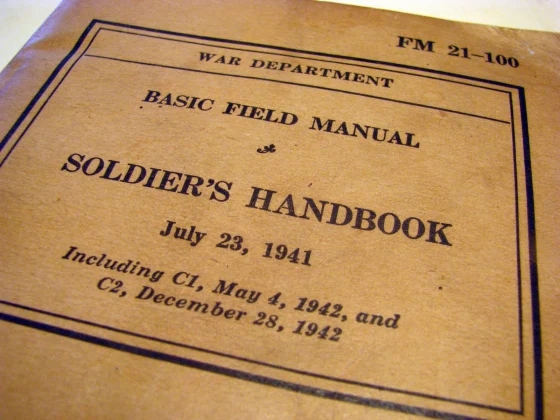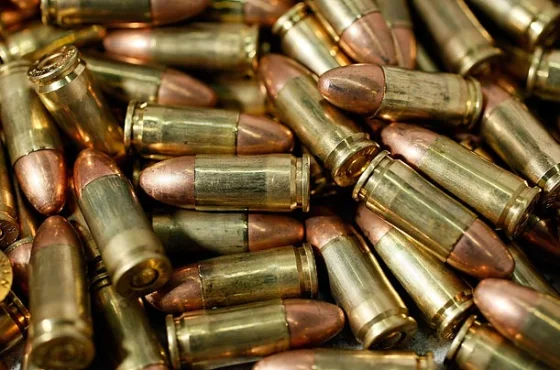“Loose the nickel plated sissy pistol and get yourself a Glock.”
-Tommy Lee Jones, From the motion picture The Fugitive-
Contents:
- Glock Essentials
- Glock Frame Sizes
- Glock Calibers
- Gen 1, 2, & 3 Glocks
- Gen 4 Glocks
- Gen 5 Glocks
- Sub-Compact “Baby” Glocks
- Slimline Glocks — G43 & G43
- The Glock Trigger
- Glock Magazine Essentials
- Glock Cleaning & Lubrication
- Spare Parts
- Modifications — Barrels, Triggers, Guide Rods & Springs, etc.
- Accessories
- Advantage Arms Brand .22LR Conversion Kits For Glocks Pistols
- Tactical Solution’s .22LR Conversion Kits For Glock 17 Pistols
Glock Essentials:
back to top
Glock Frame Sizes:
Glock pistols are available in four size frames that use double-stack magazines and one size frame that uses slimmer single-stack magazines.
Competition / Tactical:
Longer frame than Standard/Duty. Longer sight picture (distance between front and rear sight). Fine for home defense or carry on tactical gear. Not practical for concealed carry. Use the same magazines as Standard / Duty-Size frames.
Standard / Duty:
Used by many uniformed police officers. The large frame makes it easy to control. Fine for uniform carry. Not the most practical for concealed carry, although many people do. Magazine capacity: G17 9mm: 17-rounds, G22 .40 S&W: 15-rounds, G21 .45 ACP: 13-rounds.
Compact:
Used by uniformed police officers as well as those who need to carry concealed. Large enough to be easily controllable, yet small enough to be easily hidden. Magazine capacity: G19 9mm: 15 rounds, G23 .40 S&W: 13-rounds. Glock does not make a Compact .45 ACP. Capable of using the longer magazines from the Standard/Duty-Size frame Glocks, although the magazines will hang out of the bottom of the mag-well.
Sub-Compact:
Very easy to conceal. Magazine capacity: G26 9mm: 10 or 12-rounds, G27 .40 S&W: 9-rounds, G30 .45 ACP: 10-rounds. Capable of using the longer magazines from Standard/Duty size and Compact size frames.
“Slimline”:
Slimline pistols are only available in sub-compact size frames that use single-stack magazines. Slimline Glock pistols are not able to use double-stack magazines.
Magazine capacity: .380: 6-rounds, 9mm: 6-round, .45 ACP: 6-rounds.
back to top
Glock Calibers:
Glock pistols are available in the following calibers:
- .380 ACP
- 9mm Nato
- .357 Sig
- .40 S&W
- .45 ACP
- .45 G.A.P.
- 10mm Auto
back to top
Glock Parts & Operation:
back to top
Gen 1, 2, & 3 Glocks:
Gen 1: No accessory rail, no texture to speak of.
Gen 2: Front and back texture, no accessory rail.
Gen 2.5: Texture, finger groves, thumb groves, loaded chamber indicator. No accessory rail.
Gen 3: Accessory rail, texture, finger grooves, thumb grooves, loaded chamber indicator.
back to top
Gen 4 Glocks:
Several parts on 4th Generation Glocks are not compatible with Gen 1, 2, & 3 Glocks. If you are going to own several Glocks and store spare parts for a possible extended SHTF emergency then you might benefit by having either all Gen 3 (Gen 1 & 2 aren’t found for sale very often) or all Gen 4 model so that your armory will only require one type of parts.
back to top
Gen 5 Glocks
What Are The Improvements Over The Gen 4 Series?
According To Glock:
Improved Durability — NDLC Finish:
The Glock 17 Gen5 and Glock 19 Gen5 feature the proprietary Glock nDLC finish. This enhanced finish reduces corrosion and scratching and improves performance in adverse conditions.
Improved Accuracy — Glock Marksman Barrel (GMB):
The Glock 17 Gen5 and Glock 19 Gen5 feature the Glock Marksman Barrel. The barrel’s new rifling and crown deliver improved accuracy for both the beginner and the seasoned gun owner.
Universal Fit — No Finger Grooves:
The Glock 17 Gen5 and Glock 19 Gen5 have no finger grooves on the grip. Removing the finger grooves improves the ergonomics of the grip, delivering consistent comfort and improved control to a wider range of consumers, regardless of hand size.
Quicker Reloading — Flared Magazine Well:
The Glock 17 Gen5 and Glock 19 Gen5 feature a flared mag-well. The larger opening found in the mag-well of Glock Gen5 pistols makes quicker and easier magazine changes possible, particularly in high-stress situations where fractions of a second matter.
Ambi Operation — Ambidextrous Slide Stop:
The Glock 17 Gen5 and Glock 19 Gen5 feature ambidextrous slide stop levers. Now it is easier than ever for both left-handed and right-handed gun owners to quickly, comfortably, and safely manipulate the slide.
Reviews of the Gen 5 Glock:
Gen 5 Glock Torture Tests:
Gen 5 Glock 26:
back to top
Sub-Compact “Baby” Glocks:
During the dark years of the assault weapons ban, high-capacity magazines (those with a capacity greater than 10 rounds) were banned from being manufactured to sell to civilians. This was a ridiculous rule that both Congress and the FBI admitted did nothing to stop crime. In fact, since the demise of the rule in 2004, violent crime has in fact decreased. Prior to the ban the trend followed by firearms manufactures was to make giant semi-automatics that held a large number of rounds of ammunition. Once the ban went into effect and the manufacturers were limited to making only 10 round magazines for their large frame guns, the trend changed to manufacturing compact versions of their larger models, essentially chopping off the slide and barrel, and making the grip just long enough to hold then rounds. For civilians this meant that they could buy the same quality firearm, just in a smaller, more compact, and easier to conceal. Many law enforcement agencies chose the compact version of their issued sidearm to be used as a backup weapon.
One law enforcement agency in my home state issues their officers the full-size Glock in .40 caliber to be worn on their duty belt. They issue the sub-compact version of the same pistol to be worn on the ankle or other hidden location. The beauty of this setup is that while the officer will have the flush fitting less capacity magazine in the backup weapon, should he or she need to use the backup weapon and reload it, the backup weapon is capable of using the high-capacity magazines of its big brother. There isn’t any reason to carry any extra sub-compact magazines for the sub-compact backup pistol. If they find themselves needing to reload, then they use the full-size magazines that are already carried on their duty belts. If you need to reload, you are probably in a pretty bad situation and you will want to reload as many rounds as possible.
If I could only possess one pistol it would be either the Glock 26 (9mm) or 27 (.40 S&W). The model 26 is the compact version of the full-size model 17 and the mid-size 19. The G26 carries 10+1 rounds, and is rated for +P ammunition. The Glock 27 is the exact size as the model 26, but holds 9+1 rounds of .40 caliber ammunition. It is the compact version of the full-size Glock 22 and sub-compact size G23. Both pistols are relatively light, easy to conceal, carry a respectable amount of firepower for their size (the model 26 has twice that of the S&W J-frames discussed above. Both are very easy to handle are everyone is always pleasantly surprised at how accurate they are.
 To the right is a 9mm Glock 26. They ship from the factory with flush fitting 10-round magazines. I have replace the base-plate on its magazine to add another finger grove. While this particular base-plate does not add any more capacity to the magazine, it really helps with gripping the pistol, but does not take away from the concealability.
To the right is a 9mm Glock 26. They ship from the factory with flush fitting 10-round magazines. I have replace the base-plate on its magazine to add another finger grove. While this particular base-plate does not add any more capacity to the magazine, it really helps with gripping the pistol, but does not take away from the concealability.
 This is the Glock 26 with the full-size seventeen round magazine inserted. While not very aesthetic, it is fully functional and adds more surface to hold on to when shooting. This concept works great when using a mid-size G19 15-round magazine, or full-size G17 17-round magazine in the sub-compact G26 9mm pistol, or the compact-size G23 13-round magazine, or the full-size G22 15-round magazine in the sub-compact G27 .40 S&W pistol.
This is the Glock 26 with the full-size seventeen round magazine inserted. While not very aesthetic, it is fully functional and adds more surface to hold on to when shooting. This concept works great when using a mid-size G19 15-round magazine, or full-size G17 17-round magazine in the sub-compact G26 9mm pistol, or the compact-size G23 13-round magazine, or the full-size G22 15-round magazine in the sub-compact G27 .40 S&W pistol.
Avoid using Glock’s 33-round 9mm or 31-round .40 caliber magazine as they create serious reliability and balance problems for the sub-compact pistols. The giant magazines work great in the compact-size or full-size frames, but not so well with the sub-compact size frames.
back to top
Slimline Glocks — G42 & G43:
Glock 42 — .380 ACP:
 The G42 is Glock’s true “pocket pistol”. It is a slim design that holds a single stack magazine with a capacity of six rounds of .380 ACP ammo. In my humble opinion this pistol fits the “pocket pistol” roll, but because of caliber and magazine capacity I don’t consider this a serious gun fighting tool. This pistol fits into the same category of a Ruger LCP, Ruger LCR, or snub-nose J-frame revolver. Each of these are fantastic firearms, but if you find yourself in a world of shit then you had better be capable of reloading fast and often.
The G42 is Glock’s true “pocket pistol”. It is a slim design that holds a single stack magazine with a capacity of six rounds of .380 ACP ammo. In my humble opinion this pistol fits the “pocket pistol” roll, but because of caliber and magazine capacity I don’t consider this a serious gun fighting tool. This pistol fits into the same category of a Ruger LCP, Ruger LCR, or snub-nose J-frame revolver. Each of these are fantastic firearms, but if you find yourself in a world of shit then you had better be capable of reloading fast and often.
If I want to carry a small semi-automatic I would rather carry a Glock 26. The G26 isn’t too much bigger than the G42. It carries 10 rounds of 9mm +P ammo (12 rounds with the Glock +2 magazine extension), and I can carry a spare 17-round magazine in my other pocket. (Read about Compact “Baby” Glocks above.) The G42 is definitely slimmer than the traditional double-stack Glocks. You will have to decide for yourself what best fits your perceived needs.
Update: Glock has now released their 9mm, single-stack, 6+1 capacity, model G43. More soon as information becomes available.
G42 Magazines:
There is already a 2nd generation G42 magazine. As of this time I do not know the benefit of the change, however here is how to tell the difference:
Glock 43 9mm:
back to top
The Glock Trigger:
back to top
Glock Magazine Essentials:
Introduction To Glock Magazines:
Gen 4 Magazines in Gen 4 Glocks:
With a “Gen 4” Glock you can reverse the magazine release to the right side of the pistol so that it can be operated by left-handed shooters. Any appropriate caliber and size magazine will work in a “Gen 4” Glock when used with the magazine release traditionally mounted on the left side. Should you choose to reconfigure your pistol for left hand shooting you will have to use the newest “Gen 4” magazines that have a notch on both the left and right side of the magazine (as seen in the photo to the right). The older magazines will not lock into the pistol.
Khan Korean Military Contract Magazines:
 Stay away from the Khan “Korean Military Contract” (seen right) or any other aftermarket magazines for Glocks.
Stay away from the Khan “Korean Military Contract” (seen right) or any other aftermarket magazines for Glocks.
Factory Glock magazines are to plentiful and inexpensive for you not to buy the real thing.
Using Larger Frame Magazines in Smaller Frame Pistols:
 Magazines from larger Glocks will work in smaller Glocks of the same caliber. Example: The G17 17-round magazine will fit and function in the G19 and G26. The .40 S&W G22 magazine will fit and function in the G23 and G27. The higher capacity magazines will hang out of the bottom of the magazine well, but it will work.
Magazines from larger Glocks will work in smaller Glocks of the same caliber. Example: The G17 17-round magazine will fit and function in the G19 and G26. The .40 S&W G22 magazine will fit and function in the G23 and G27. The higher capacity magazines will hang out of the bottom of the magazine well, but it will work.
33-Round (9mm) & 31-Round (.40 S&W) Magazines:
The 33-round 9mm magazines (seen far left in the photo below), are intended for the full-size, fully automatic G18 machine pistol. They will fit and function perfectly in the G17 and G19, although some shooters will find them awkward as they affect balance of the pistol.
You can run into reliability problems if you try to use the 33-round magazine in the sub-compact Glock (G26). The same applies to the 31-round .40 S&W magazines. It will fit and function in the full-size G22 and the compact-size G23, but may not function as well in the sub-compact G27.
Adding Pinky Finger Extensions on Compact Glock Magazines:
 If you want to add a pinky-finger extension to the flush fitting magazines of a compact Glock (G26, G27, G30, G33) Pearce Grip makes a durable extension that has survived countless mag drops to the ground and has survived being carried on fully loaded magazines for years.
If you want to add a pinky-finger extension to the flush fitting magazines of a compact Glock (G26, G27, G30, G33) Pearce Grip makes a durable extension that has survived countless mag drops to the ground and has survived being carried on fully loaded magazines for years.
Adding Magazine Extensions That Add Magazine Capacity:
 If you are going to a magazine extensions that increase the magazine’s capacity I recommend that you only use Glock’s own extensions. There are several brands of aftermarket extensions. I had one added to a G26 magazine. The fully loaded magazine was loaded in the pistol. The pistol was sitting in its holster on my desk while I was working. Without warning the rim of the magazine extension that holds it to the magazine broke loose. The magazines spring shot the extension off of the pistol like mousetrap and bullets flew out everywhere. It scared me to death. Thanks God that it didn’t happen while I was standing in line to check out at the grocery store, or was defending myself with that firearm. Glock makes a magazine extension that adds two rounds to their 9mm magazines, and one round to their .40 S&W magazines. Use only Glock brand magazine extensions.
If you are going to a magazine extensions that increase the magazine’s capacity I recommend that you only use Glock’s own extensions. There are several brands of aftermarket extensions. I had one added to a G26 magazine. The fully loaded magazine was loaded in the pistol. The pistol was sitting in its holster on my desk while I was working. Without warning the rim of the magazine extension that holds it to the magazine broke loose. The magazines spring shot the extension off of the pistol like mousetrap and bullets flew out everywhere. It scared me to death. Thanks God that it didn’t happen while I was standing in line to check out at the grocery store, or was defending myself with that firearm. Glock makes a magazine extension that adds two rounds to their 9mm magazines, and one round to their .40 S&W magazines. Use only Glock brand magazine extensions.
Addendum: Since writing the above information I have come across a number of horror stories of magazine extensions popping off the magazine without warning and spilling rounds all over the ground. There were several contributions by police officers and civilians that knocked the extension off while carrying a holstered weapon while seated in their vehicles, or bumping them while in a scuffle with a perp. There were also a number of stories of magazines popping apart when ejected magazines hit the ground, especially with magazines that were not fully holstered. I’m no longer using magazines with extensions. If I feel a need to carry more ammunition in the gun I’ll carry a longer magazine.
Changing Springs When Adding Extension That Add Magazine Capacity:
When adding +2 extensions to my 9mm Glock magazines I was concerned that the original magazine spring might not be long enough for the addition length of the modified magazine. I was worried that the springs might not be strong and fast enough with the last couple of rounds in the magazine. I did a bunch of research and found this useful information and recommendations.
Sub-compact “Baby” Glocks (G26 and G27) use the same springs as the compact frame Glocks (G19 and G23). They are the same part number and have the same number of coils. This means that a spring that is good enough for 15-rounds in the G19 is stuffed into a 10-round G26 magazine. It is no problem to simply remove the flush-fitting base plate of the magazine and add the +2 extension.
If you are going to add an extension to a mid-size magazine you should replace the magazine spring with one that is intended for the full-size frame. Example: Replace the 15-round G-19 spring with one intended for a 17-round G17, or replace a 13-round G23 spring with one intended for the 15-round G22 spring. A now modified 17-round magazine will have a 17-round spring, and a modified 15-round .40 S&W magazine will have a 15-round spring.
If you want to add an extension to a full-size G17 or G22 magazine you can order a Glock factory spring that is intended for 19-rounds in the G17, and 16 or 17 rounds in the G22.
The extensions and springs can be ordered from Brownell’s or Midway USA.
Glock Magazine Followers:
The inner dimensions of the magazine tubes have been changed various times, as well as the followers. They’ve been changed as problems with the previous designs were discovered and to work better with various ammunition. As a result the followers in the magazines have also evolved. You may possess Glock magazines from different time periods (maybe you bought a Glock pistol and magazines several years ago, but you just recently bought some brand new magazines). They will all fit and function just fine in your pistol, but you might notice minor variations with the magazine bodies and followers. If you mix and match parts from several different evolutions of magazines you may run into reliability issues.
Periodically you may choose to disassemble your magazines to thoroughly clean them (such as after operating in a dusty or muddy environment). It is recommended that you only disassemble and clean one magazine at a time so that you do not accidentally reassemble parts from different evolutions of magazines. Remember that your magazines should be dry without any traces of oil or chemicals which might leech into the primers of your ammunition and cause reliability issues.
 If you choose to rehabilitate older magazines and replace springs and followers you will need to identify what evolution of follower and then research online as to what new versions are compatible with your older magazine body. You can identify the caliber and evolutionary version by engravings on the follower. The followers shown right are .40 S&W and are evolution #5.
If you choose to rehabilitate older magazines and replace springs and followers you will need to identify what evolution of follower and then research online as to what new versions are compatible with your older magazine body. You can identify the caliber and evolutionary version by engravings on the follower. The followers shown right are .40 S&W and are evolution #5.
back to top
Glock Cleaning & Lubrication:
back to top
Spare Parts:
Coming soon.
back to top
Modifications — Barrels, Triggers, Guide Rods & Springs, etc.:
back to top
Accessories:
Weapon Mounted Lights:
Coming soon!
G-Tul Glock Magazine Disassembly & Cleaning Tool:
 The brush on the right has a pin extending from the handle that is used to push in the pin in the bottom of the magazine to remove the base plate. One the base plate is removed and the magazine is disassembled, the brush is used to clean any dust and debris from the interior of the magazine.
The brush on the right has a pin extending from the handle that is used to push in the pin in the bottom of the magazine to remove the base plate. One the base plate is removed and the magazine is disassembled, the brush is used to clean any dust and debris from the interior of the magazine.
 The device on the right is used to squeeze Glock magazines to aid in removing the base-plate for cleaning. Red is for 9mm/.40 S&W. Lime green is for double-stack 10mm/.45 ACP. Baby blue is for single-stack .45 ACP G-36. Purple is for the .380 ACP G42.
The device on the right is used to squeeze Glock magazines to aid in removing the base-plate for cleaning. Red is for 9mm/.40 S&W. Lime green is for double-stack 10mm/.45 ACP. Baby blue is for single-stack .45 ACP G-36. Purple is for the .380 ACP G42.
back to top
Advantage Arms Brand .22LR Conversion Kits For Glocks:
Advantage Arms .22LR conversion kits for Glocks, Springfield XD, and 1911 pistols are finally starting to reappear after being backordered for almost two years. I have one for my G-26 and one for my G-17 and they work great. My boys love shooting them (and so do I). To use these kits you simply remove the slide assembly from your host weapon and replace it with the slide assembly from the conversion kit.
Your conversion kit will come with one 10-round magazine. Extra magazines can be ordered directly from Advantage Arms’s website. Advantage Arms, Inc. is located in California where it is not legal to own magazines that hold more than 10-rounds, therefore they state on their website that they will not make magazines that hold more than 10 rounds. Tactical Solutions makes a magazine that holds 15-rounds in the Advantage Arms kits, but it is not flush-fitting and will extend about half of an inch out of the bottom of the pistol’s magwell.
Rather than continually switch the slides back and forth on our Glocks, several of us have been able to find brand new complete Glock frames on Gunbroker.com. We have put the conversion kits on the new Glock frames to create dedicated .22LR caliber Glock pistols.
The manufacturer recommends CCI”s “Mini-Mags” (40-grain round nose, not hollow-point) or Remington’s bulk pack “Golden Bullets”. The manufacturer notes that Remington Golden Bullets work quite well, however, you will get more light strikes and inconsistent loads than with the CCI Mini-Mag loads. With a clean conversion kit and the Remington ammunition I have fired well over 300 rounds before the first malfunction. The conversion kits will not work at all with CCI hollow-points, Winchester, Remington Thunderbolt, PMC, or Federal’s bulk-pack ammo. Gemtech’s own brand of subsonic ammunition (manufactured by CCI) functions flawlessly with the Glock kits (I can’t verify if it will work with the other kits…probably though).
As further discussed below, while both my Glock 26 and Glock 17 conversion kits normally love to ingest large sums of Remington Golden Bullets, they simply perform miserably with them when I have a .22LR suppressor attached. The kits work great, however, with Gemtech’ subsonic ammunition.
Threaded barrels are available directly from the manufacturer so that you can shoot your conversion kit with a suppressor. The barrels come with an adaptor that steps up the thin threaded barrel (thread pattern unknown) to a 1/2×28 thread pattern that is common to most .22LR suppressors. I found that when removing the suppressor from the barrel adaptor that the adaptor would unscrew from the barrel rather than the suppressor unscrewing from adaptor. A quick fix is to very gently torque the adaptor to the barrel with a 16mm open end wrench. (Keep an extra 16mm open-ended wrench in your pistol’s carry bag and one in your gun toolbox / cleaning kit. They are available at every pawn shop on the planet.) Torque it just enough that when you attempt to remove the suppressor that the suppressor thread connection disengages the adaptor before the adaptor disengages the barrel. Don’t over-torque it. Also, don’t get the bright idea to use thread-locker to secure the adaptor to the barrel. You will need to remove the adaptor from barrel to disassemble the conversion kit for cleaning.
The conversion kits functions great with Gemtech’s subsonic .22LR ammunition and an Advanced Armament Corporation Element II suppressor.  It is very quiet. It is interesting to note that with an Advanced Armament Corporation’s Element II suppressor attached to a full-size frame Glock (G17/G22) and Advantage Arms conversion kit, I have had great success with the CCI Mini-Mag and Gemtech ammunition discussed above, but dismal results with the Remington Golden bullets. The kit normally runs great with the Remington ammunition, but I have tried to use the suppressor the gun suffers more light strikes than it successfully fires. If you use a suppressor, stick to Mini-Mags and Gemtech Subsonic ammunition. I have found that it is VERY important to make sure that the slide rails are lubricated when using a suppressor. If the slide rails start running dry the adaptor kit may still keep running fairly reliably, however if you add a suppressor you may start suffering failures to fully seat a fresh round all of the way into the chamber or light firing pin strikes. Make sure that prior to shooting with a suppressor that you let a drop of gun lube run down the channel of the slide rails. Just a drop on each side will do, but will make all of the difference in the world.
It is very quiet. It is interesting to note that with an Advanced Armament Corporation’s Element II suppressor attached to a full-size frame Glock (G17/G22) and Advantage Arms conversion kit, I have had great success with the CCI Mini-Mag and Gemtech ammunition discussed above, but dismal results with the Remington Golden bullets. The kit normally runs great with the Remington ammunition, but I have tried to use the suppressor the gun suffers more light strikes than it successfully fires. If you use a suppressor, stick to Mini-Mags and Gemtech Subsonic ammunition. I have found that it is VERY important to make sure that the slide rails are lubricated when using a suppressor. If the slide rails start running dry the adaptor kit may still keep running fairly reliably, however if you add a suppressor you may start suffering failures to fully seat a fresh round all of the way into the chamber or light firing pin strikes. Make sure that prior to shooting with a suppressor that you let a drop of gun lube run down the channel of the slide rails. Just a drop on each side will do, but will make all of the difference in the world.
Ballistics By The Inch states that with CCI’s 40-grain round nose bullets you should expect a velocity of 1014 feet per second when fired from a 4″ barrel. I used the Ballistic iPad app, and assuming the 1014 feet-per-second velocity and a sight height-above-bore of .625″, I calculated the best distance to zero the pistol for the flattest trajectory is going to be 8 yards. With an 8 yard zero you can, of course expect a point-of-aim / point-of-impact at 8 yards, a maximum apogee of .6″ above point-of-aim at approximately 26 yards, point-of-aim / point-of-impact again at approximately 44 yards, at 50 yards your rounds should impact .44″ below point-of-aim, and at approximately 52 yards your rounds should impact .6″ below point-of aim. With this zero you can expect to hit within +/- the height of the sights above the bore (.6″) out past 50 yards. At 100 yards your rounds will impact approximately 10 inches below point-of-aim. At 100 yards you can expect a measly 71 foot pounds of energy out of the bullet, so it is not realistic to effectively defend yourself or to hunt humanely at that distance, but it is nice to be aware of the expected performance should you ever be forced to.
back to top
Tactical Solution’s .22LR Conversion Kits For The Glock 17:

Tactical Solution brand conversion kits work similarly to the Advantage Arms brand kits in that you remove and replace the pistol’s slide assembly with the conversion kit’s, and use the magazine that is supplied with the conversion kit. Tactical Solution slides do not lock to the rear after the last shot. Also, their magazine can hold up to 15-rounds, but they are not flush fitting. I am not aware of a threaded barrel option for the T.S. kits.


















































